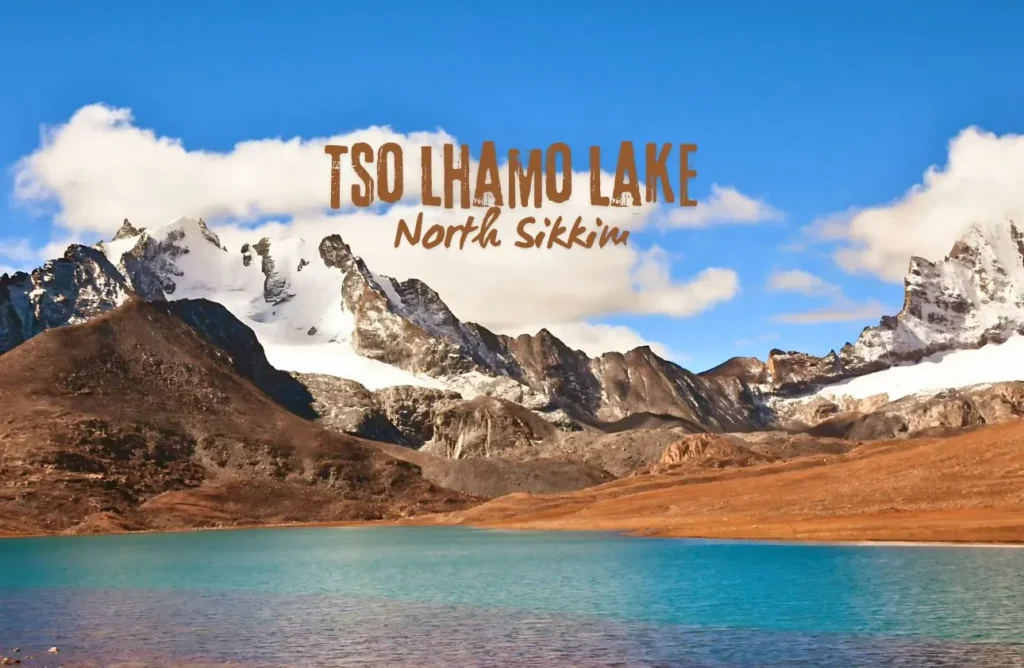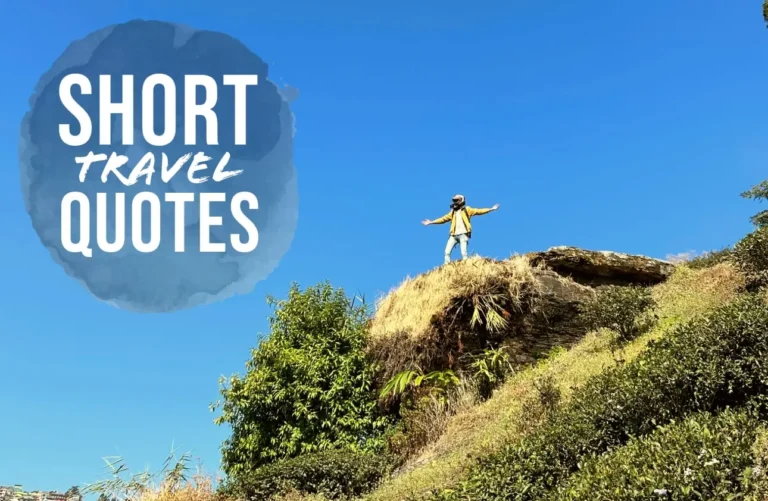Chopta Valley North Sikkim

Chopta Valley, located in the northern part of Sikkim, is a breathtaking destination known for its rugged landscapes, high-altitude vistas, and a peaceful and scenic retreat for travellers looking to escape the crowds.
Situated at an elevation of approx 13,200 feet, this offbeat destination offers an experience that feels truly remote and untouched known for its stunning alpine landscapes and panoramic views of snow-capped peaks.
Surrounded by towering Himalayan peaks, dense forests, and crystal-clear rivers, the valley is a gateway to adventure, including trekking, wildlife exploration, and photography. Its relative remoteness adds to its charm, making it a perfect spot for those looking to connect with nature in its purest form.
Chopta Valley offers a one-of-a-kind experience in the heart of the Himalayas, a destination that stands out.
Getting to Chopta Valley, North Sikkim

Step-by-Step Transportation Options:
- Fly to Bagdogra Airport (West Bengal): To reach Chopta Valley, the nearest airport is Bagdogra Airport in West Bengal, about (136.8 km) via NH10 from Gangtok.
- Train to New Jalpaiguri (NJP) Railway Station (West Bengal): The nearest railway station is New Jalpaiguri (NJP), also in West Bengal, which connects to major cities across India.
- Road Journey to Gangtok: From Bagdogra or NJP, take a taxi, shared jeep, or private vehicle. The journey from Bagdogra/NJP to Gangtok takes about 4-5 hours.
- Travel from Gangtok to Lachen: From Gangtok, Chopta Valley is around 108.4 km via Singtam – Chungthang Rd & 117.3 km via Gangtok-Chungthang Rd (6-8 hours by road). Take a taxi or shared vehicle, Lachen serves as the main base for further travel to Chopta Valley, as public transport options are limited in this region.
- Drive from Lachen to Chopta Valley: From Lachen, Chopta Valley is around 30 kilometres (2-3 hours by road). Only private or shared taxis are available; limited public transport.
- Ensure Permits and Permissions: Obtain the Protected Area Permit (PAP) required for visiting Chopta Valley, available through authorized tour operators or local travel agencies in Gangtok.
Things To Note:
- Opt for an SUV or 4×4 vehicle, especially in winter.
- Plan stops along scenic spots such as Thangu Village or Naga Waterfall.
- Carry adequate supplies for the journey, as amenities can be limited.
Best Time to Visit Chopta Valley, North Sikkim
Chopta Valley experiences cold temperatures year-round due to its high altitude, with weather varying significantly across the seasons. Winters are marked by heavy snowfall, while spring and summer bring mild, pleasant weather.
Ideal Seasons for Activities
- Spring (March to May):
This is one of the best times to visit Chopta Valley for trekking, camping, and sightseeing. The valley comes alive with blooming wildflowers and lush greenery, offering clear skies and moderate temperatures. It’s perfect for exploring the area and enjoying outdoor activities. - Summer (June to August):
Though the valley remains cool, the monsoon season can bring heavy rainfall and landslides, making trekking and travel more difficult. While it’s not ideal for outdoor adventures, summer provides a lush, misty landscape for those seeking solitude. - Autumn (September to November):
This is another excellent season for trekking and sightseeing. The post-monsoon period offers crisp, clear weather, with stunning views of the surrounding peaks and comfortable temperatures for outdoor activities. - Winter (December to February):
Winter transforms Chopta Valley into a snow-covered wonderland, ideal for those seeking snowy landscapes and winter photography. However, the heavy snowfall may hinder trekking and road conditions, so it’s best suited for visitors prepared for challenging travel.
Recommended Months by Activity
- Trekking and Camping: March to May, September to November.
- Sightseeing and Nature Exploration: March to May, September to November.
- Winter Snow Adventures: December to February, for those who enjoy snow and are prepared for cold conditions.
Natural Beauty and Landscape

High-Altitude Beauty (Geography and Scenery): Chopta Valley, at an elevation of 13,200 feet, features snow-capped mountains, alpine forests, and the serene Teesta River. The valley’s high-altitude landscape is a mix of frozen rivers and rugged peaks, offering stunning scenery year-round.
Flora and Fauna: Rich in biodiversity, the region is home to rhododendrons, wildflowers, and rare wildlife like the Himalayan monal and musk deer, making it ideal for birdwatching and photography. Key attractions include the snow-clad peaks, lush forests, and the Teesta River, which add to the valley’s natural charm.
Key Natural Attractions
- Snow-Clad Mountains: Offering a stunning backdrop throughout the year, these towering peaks create a dramatic skyline perfect for photography and adventure.
- Teesta River: Flowing gracefully through the valley, the river enhances the landscape’s tranquillity, offering a serene atmosphere for visitors to enjoy.
- Alpine Forests: The valley is dotted with thick, green forests that provide shelter to numerous rare species of plants and animals, further enriching the region’s diverse ecosystem.
Adventure Activities in Chopta Valley, North Sikkim
Chopta Valley offers a variety of adventure activities for nature lovers and thrill-seekers alike:
- Trekking and Hiking: Chopta Valley has several popular trekking routes, catering to different difficulty levels.
- River Rafting: For adrenaline enthusiasts, river rafting on the Teesta River offers an exhilarating experience amidst breathtaking landscapes.
- Bird Watching: The valley is a prime bird-watching location, where you can spot rare Himalayan species like the Himalayan monal.
- Photography and Nature Walks: Chopta’s scenic beauty makes it a photographer’s paradise. Ideal spots for capturing stunning landscapes and wildlife abound, while peaceful nature walks provide an immersive experience in the valley.
- Camping: Several scenic camping spots are available for overnight stays, allowing visitors to appreciate the serene environment fully.
Must Read: Paragliding In Gangtok, Sikkim
Cultural Insights of Chopta Valley
Chopta Valley is rich in cultural heritage, primarily influenced by local communities such as the Lepcha and Bhutia people. Visitors can immerse themselves in the region’s traditional customs and festivals, which reflect the vibrant culture and spirituality of the area.
- Local Traditions and Festivals: Engaging with the indigenous Bhutia community offers a unique opportunity to witness their customs and celebrations. Festivals throughout the year showcase traditional music, dance, and rituals, providing a deeper understanding of the local way of life.
- Monasteries and Spiritual Sites: The region is home to several monasteries, where visitors can experience spiritual practices and learn about Buddhism’s influence on the local culture.
- Interaction with Locals: Opportunities for interaction with the Lepcha and Bhutia communities enrich the travel experience, allowing visitors to learn about their traditions, crafts, and daily life in the high-altitude environment of Chopta Valley.
Accommodation and Food
Chopta Valley offers a variety of accommodation options and a rich culinary experience for visitors.
- Accommodation Options: Lodging in the area is limited, primarily consisting of homestays and guesthouses in nearby Lachen or basic facilities close to Chopta Valley. Travelers can expect modest comfort and essential amenities, making these options ideal for those seeking an authentic experience in a natural setting.
- Food and Local Cuisine: Sikkimese cuisine is a highlight for visitors, with an array of delicious dishes to try. Local specialities include momo (dumplings), thukpa (noodle soup), and gundruk (fermented leafy greens). Dining experiences often reflect the region’s cultural influences, allowing travellers to savour authentic flavours while interacting with local communities.
Nearby Attractions
Chopta Valley serves as an excellent base for exploring several notable attractions in North Sikkim.

Gurudongmar Lake, one of the highest lakes in the world, is located near Chopta Valley. This sacred lake offers breathtaking views and a serene atmosphere, making it a must-visit destination. The best time to visit is during the warmer months when accessibility is easier, and the surrounding landscapes are stunning.
Tso Lhamo Lake is another hidden gem, which lies beyond Chopta Valley North Sikkim. Known for its pristine beauty and tranquillity, this high-altitude lake is perfect for adventurous travellers seeking unique experiences.

Practical Travel Tips for Chopta Valley
- Essentials to Pack: Prepare for your trip by packing essentials such as appropriate clothing, sturdy footwear, and necessary equipment. Seasonal packing tips will help ensure you are ready for varying weather conditions.
- Health and Safety Precautions: Be aware of altitude sickness and take precautions to acclimatize properly. Carry any necessary medications and stay hydrated.
- Responsible Travel Practices: Embrace eco-friendly practices to help preserve Chopta Valley’s natural beauty. Be respectful of local customs and traditions, and minimize your environmental impact through sustainable tourism practices.
Conclusion
Chopta Valley stands out as an offbeat destination for those seeking solitude and unspoiled nature. With its breathtaking views, diverse adventure activities, and rich cultural experiences, it offers something special for every traveller.
Whether you’re trekking through stunning landscapes, exploring local traditions, or simply soaking in the serene atmosphere, Chopta Valley promises unforgettable memories.
Must Read: 8 Best Tourist Places To Visit In Darjeeling






